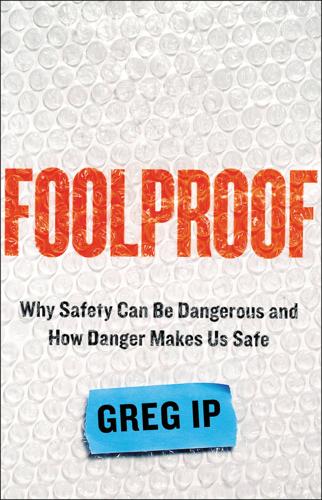
Foolproof: Why Safety Can Be Dangerous and How Danger Makes Us Safe
by
Greg Ip
Published 12 Oct 2015
Bishop, eds. (1993). 9 Peltzman grew up in the Bensonhurst: For Sam Peltzman’s life and his work I relied principally on interviews and follow-up correspondence. 10 In a controversial 1973 paper: Sam Peltzman, “An Evaluation of Consumer Protection Legislation: The 1962 Drug Amendments,” Journal of Political Economy 81, no. 5 (1973): 1049–1091. 11 Peltzman felt his results were: Sam Peltzman, “The Effects of Automobile Safety Regulation,” Journal of Political Economy 83, no. 4 (1975): 677–726. 12 Peltzman didn’t stop with autos: “The Health Effects of Mandatory Prescriptions,” Sam Peltzman, University of Chicago Center for the Study of the Economy and the State, Working Paper #38, April 1986. 13 Wilde illustrated his point: Gerald Wilde, “Does Risk Homeostasis Theory Have Implications for Road Safety?
…
Scholars, many working out of the University of Chicago, argued that government management of the economy was backfiring by failing to consider how people would adapt. Though federal regulation had continued to expand, George Stigler argued that regulators often ended up serving the regulated, not consumers. Stigler’s student Sam Peltzman made an even more audacious claim: regulations aimed at making consumers safer might be doing the opposite. In 1975 he published a provocative study that claimed that seat belts were causing drivers to drive more recklessly, resulting in more pedestrian deaths. Scholars were soon finding similar behavior in fields as diverse as shipping and football, and labeling the phenomena “risk compensation,” “risk homeostasis,” and “human factors.”
…
Among the first standards passed were rules requiring seat belts for all occupants, energy-absorbing steering columns, a padded instrument panel, and dual braking systems. But just as government control of the economy and the environment had by this point come under fire, so did safety regulation. Leading the backlash was Sam Peltzman, the University of Chicago economist we met in Chapter 1. I visited Peltzman one afternoon at his office at the university’s business school on the city’s South Side. Seventy-three years old, he had retired some time ago from active teaching but was still writing and speaking. Peltzman dresses like a hippie.
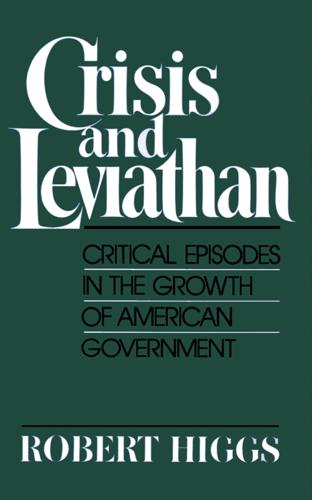
Crisis and Leviathan: Critical Episodes in the Growth of American Government
by
Robert Higgs
and
Arthur A. Ekirch, Jr.
Published 15 Jan 1987
As Mancur Olson has observed, governmental redistributions typically "have arbitrary rather than egalitarian impacts on the The Sources of Big Government 13 distribution of income-more than a few redistribute income from lower to higher income people." Many governmental activities are "of no special help to the poor" and many others "actually harm them."24 Sam Peltzman's version of the Political Redistribution Hypothesis holds that "governments grow where groups which share a common interest in that growth and can perceive and articulate that interest become more numerous." Here governmental growth is seen as driven exclusively by citizen demands, governmental response being taken for granted.
…
Hence the more rapid growth of governmental employment at the lower levels than at the federal level since World War II is neither surprising nor especially significant. 21 Despite the many defects of the quantitative measures presented in Table 2.1, economists and political scientists, with few. exceptions, continue to focus their studies of the growth of government on that kind of evidence. Some are aware of the problems inherent in a reliance on such ambiguous data. Sam Peltzman, for example, begins his study by observing that "to equate government's role in economic life with the size of its budget ... is obviously wrong since many government activities (for example, statutes and administrative rules) redirect resources just as surely as taxation and spend- 32 Framework ing."
…
Given the multitude of indirect as well as direct ways 278 Notes that governmental policies effect redistributions, the measure is not operational and hence the hypothesis cannot be tested empirically. A subsequent paper by Meltzer and Richard fails to recognize the problem and its test of the authors' hypothesis is therefore unpersuasive. "Tests of a Rational Theory of the Size of Government," Public Choice 41 (1983): 403-418. 24. Olson, Rise and Decline, p. 174. 25. Sam Peltzman, "The Growth of Government," Journal of Law and Economics 23 (Oct. 1980): 285, emphasis in original. 26. Ibid., pp. 221-223, 233-234. Political scientist Morris P. Fiorina has aptly remarked that "most economists receive a tolerably good training in statistical method, so they are capable of producing analyses which have the appearance of thoroughness and sophistication, but ... their lack of contextual knowledge leads them to rely on naive model specification.

When to Rob a Bank: ...And 131 More Warped Suggestions and Well-Intended Rants
by
Steven D. Levitt
and
Stephen J. Dubner
Published 4 May 2015
CHAPTER 7: BUT IS IT GOOD FOR THE PLANET? 165 “IS THE ENDANGERED SPECIES ACT . . .”: “He’s got a new working paper”: See John A. List, Michael Margolis, and Daniel E. Osgood, “Is the Endangered Species Act Endangering Species?,” NBER working paper 12777, December 2006. / 166 “Sam Peltzman’s observation that only 39 of the 1,3000 species list have ever been removed”: See Sam Peltzman, “Regulation and the Natural Progress of Opulence,” American Enterprise Institute monograph, May 23, 2005. 166 “BE GREEN: Drive”: “via John Tierney’s blog”: John Tierney, “How Virtuous Is Ed Begley Jr.?,” The New York Times (TierneyLab), February 25, 2008. / 167 “Goodall is no right-wing nut”: See Chris Goodall, How to Live a Low-Carbon Life (Earthscan, 2007). 168 “DO WE REALLY NEED A FEW BILLION LOCAVORES?”
…
So in the short run, destruction of habitat is likely to actually increase. Based on this theory, List et al. analyze the data for the cactus ferruginous pygmy owl near Tucson, Arizona. Indeed, they find that land development speeds up substantially in the areas that are going to be designated critical habitats. This result, combined with the economist Sam Peltzman’s observation that only 39 of the 1,300 species put on the endangered species list have ever been removed, do not paint a very optimistic picture of the efficacy of the Endangered Species Act. Be Green: Drive (SDL) When it comes to saving the environment, things are often not as simple as they seem at first blush.

The Third Pillar: How Markets and the State Leave the Community Behind
by
Raghuram Rajan
Published 26 Feb 2019
August 31, 2017, available at https://pdfs.semanticscholar.org/138f/249c43bfec315227a242b305b9764d57a0af.pdf. Of course, average size would also increase if small firms no longer enter. 48. See Sam Peltzman, “Industrial Concentration under the Rule of Reason,” The Journal of Law and Economics 57, no. S3 (August 2014): S101–20. 49. “Too Much of a Good Thing,” The Economist, March 26, 2016, https://www.economist.com/briefing/2016/03/26/too-much-of-a-good-thing. 50. Sam Peltzman, “Industrial Concentration.” 51. Robert Bork, The Antitrust Paradox: A Policy at War With Itself (New York: Basic Books, 1978). 52. “AT&T and Time Warner Are Cleared to Merge,” The Economist, June 16, 2018, https://www.economist.com/news/leaders/21744068-more-consolidation-will-follow-consumers-ought-worry-att-and-time-warner-are-cleared?
…
The average US public firm today is three times larger, even after correcting for inflation, than it was two decades ago.47As a number of studies have shown, US industries are becoming more dominated by a few large firms today—they are becoming more concentrated, in econ-speak.48 For example, between 1982 and 2012, retail trade saw the share of the top four firms double from 15 percent to 30 percent. In the critical sector of information technology, media, and communications, the Economist magazine found the top four firms now accounted for nearly 50 percent of the revenue.49 Concentration has been made easier by a more lax antitrust environment, as argued by my colleague Sam Peltzman.50 Right until the early 1980s, antitrust authorities were quite active in preventing mergers that increased industry concentration substantially. The legal scholar Robert Bork (yes, he of the failed Supreme Court nomination) argued in his book The Antitrust Paradox in 1978 that it is possible that rising concentration in an industry may reflect gains in market share for more efficient players rather than growing monopolization.51 He urged antitrust regulators to focus on whether the consumer was better off rather than whether industry was dominated by a few firms.
…
Both were very generous with their comments on an earlier draft. I have also benefited from discussions with, and comments from, Marianne Bertrand, Steve Davis, Douglas Diamond, Eugene Fama, Rob Gertner, Chang-Tai Hsieh, Erik Hurst, Steven Kaplan, Anil Kashyap, Yueran Ma, Bhanu Pratap Mehta Lubos Pastor, Sam Peltzman, Eswar Prasad, Ram Shivakumar, Amir Sufi, Chad Syverson, Richard Thaler, Rob Vishny, and Eric Zwick. Rohit Lamba and Prateek Raj were especially kind in going through the early chapters and giving me detailed useful comments. Krishna Kamepalli and Adarsh Kumar provided very helpful research assistance.
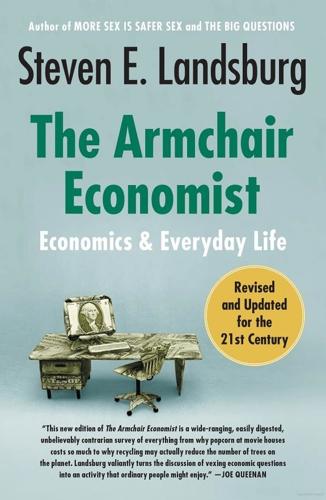
The Armchair Economist: Economics and Everyday Life
by
Steven E. Landsburg
Published 1 May 2012
At the same time, the regulations tend to increase the number of driver deaths by encouraging reckless behavior. Which effect is the greater? Is the net effect of the regulations to decrease or to increase the number of driver deaths? This question cannot be answered by pure logic. One must look at actual numbers. In the middle 1970s, Sam Peltzman of the University of Chicago did just that. He found that the two effects were of approximately equal size and therefore cancelled each other out. There were more accidents and fewer driver deaths per accident, but the total number of driver deaths remained essentially unchanged. An interesting side effect appears to have been an increase in the number of pedestrian deaths; pedestrians, after all, gain no benefit from padded dashboards.
…
I tell my daughter to be wary of such people—even when they are preschool teachers who have otherwise earned a lot of love. Sincerely, Steven Landsburg APPENDIX Notes on Sources This book contains many ideas and arguments mat I lifted from other people. My memory is not good enough to accurately acknowledge them all. In this appendix I will do the best I can.* The Power of Incentives: Sam Peltzman's work on auto safety was published in the Journal of Political Economy in 1975. Isaac Ehrlich's work on capital punishment was published in the American Economic Review, also in 1975. Ed Learner's article on taking the "con" out of econometrics was published in the American Economic Review in 1983.
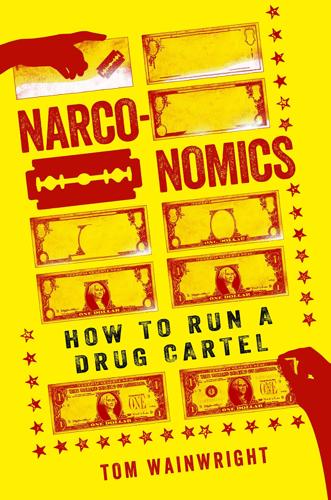
Narconomics: How to Run a Drug Cartel
by
Tom Wainwright
Published 23 Feb 2016
Dudley, “Drug Trafficking Organizations in Central America: Transportistas, Mexican Cartels and Maras,” Wilson Center, 2010, at http://www.wilsoncenter.org/sites/default/files/Chapter%202-%20Drug%20Trafficking%20Organizations%20in%20Central%20America%20Transportistas,%20Mexican%20Cartels%20and%20Maras.pdf. 4. US Securities and Exchange Commission, see p. 15 at http://www.sec.gov/Archives/edgar/data/1467858/000146785812000014/gm201110k.htm#s8EF7834BE4E777188CAF1031CB30C168. 5. Gianluca Fiorentini and Sam Peltzman, eds., The Economics of Organised Crime (Cambridge: Cambridge University Press, 1997). 6. Christina Villacorte, “Tattoo Removal in Prison Gives Inmates a Second Chance,” Huffington Post, September 4, 2013, at http://www.huffingtonpost.com/2013/09/04/tattoo-removal-prison_n_3864222.html. CHAPTER 3 THE PEOPLE PROBLEMS OF A DRUG CARTEL: WHEN JAMES BOND MEETS MR.
…
Alison Smith, “Fortune 500 Companies Spend More Than $500bn on Corporate Responsibility,” Financial Times, October 12, 2012, at http://www.ft.com/cms/s/0/95239a6e-4fe0-11e4-a0a4-00144feab7de.html#axzz3lqtuDTmC. 8. As quoted in La Jornada, September 20, 2005 (in Spanish), at http://www.jornada.unam.mx/2005/09/20/index.php?section=politica&article=022n1pol. 9. Herschel I. Grossman, “Rival Kleptocrats: The Mafia Versus the State,” in Gianluca Fiorentini and Sam Peltzman, The Economics of Organised Crime (Cambridge University Press, 1997). 10. Leopoldo Franchetti, Political and Administrative Conditions in Sicily (1876). 11. Diego Gambetta and Peter Reuter, “Conspiracy Among the Many: The Mafia in Legitimate Industries,” in Fiorentini and Peltzman, The Economics of Organised Crime. 12.
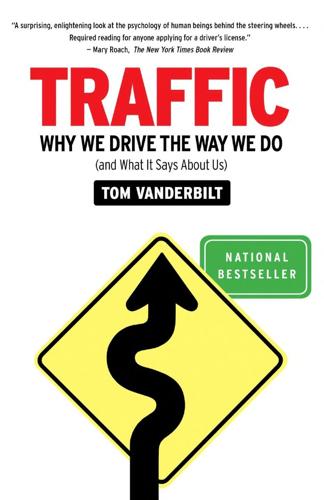
Traffic: Why We Drive the Way We Do (And What It Says About Us)
by
Tom Vanderbilt
Published 28 Jul 2008
The most troublesome possible answer, one that has been haunting traffic safety for decades, suggests that, as with the roads in Chapter 7, the safer cars get, the more risks drivers choose to take. While this idea has been around in one form or another since the early days of the automobile—indeed, it was used to argue against railroad safety improvements—it was most famously, and controversially, raised in a 1976 article by Sam Peltzman, an economist at the University of Chicago. Describing what has since become known as the “Peltzman effect,” he argued that despite the fact that a host of new safety technologies—most notably, the seat belt—had become legally required in new cars, the roads were no safer. “Auto safety regulation,” he concluded, “has not affected the highway death rate.”
…
This is peculiarly true of accidents at highway grade crossings. These commonly occur when the conditions are such as to cause the highway travelers to suppose that, if any danger existed, they could not but be aware of it.” From Charles Francis Adams, Notes on Railroad Accidents (New York: G. P. Putnam’s Sons, 1879). “the highway death rate”: Sam Peltzman, “The Effects of Automobile Safety Regulation,” Journal of Political Economy, vol. 83, no. 4 (August 1976), pp. 677–726. reason to feel less safe: Decades later, people are still sifting through the data, trying to refute or defend Peltzman’s hypothesis. He has been questioned for, among other things, including motorcyclists in his count of nonoccupant fatalities—that is, along with pedestrians and cyclists—as if they were a similar beast.
…
Moore, and D. A. Simpson, “Prevention of Head Injuries to Car Occupants: An Investigation of Interior Padding Options,” Federal Office of Road Safety, Report CR 160, NHMRC Road Accident Research Unit, University of Adelaide and Monash University Accident Research Centre. seat belts and air bags: Sam Peltzman, “Regulation and the Natural Progress of Opulence,” lecture presented at the American Enterprise Institute, September 8, 2004, AEI-Brookings Joint Center for Regulatory Studies, Washington, D.C. Simpson has suggested: Joe Simpson, writing about “super-share ice screws” and other technological innovations, notes that “one would have thought these welcome developments would have made the sport considerably safer.
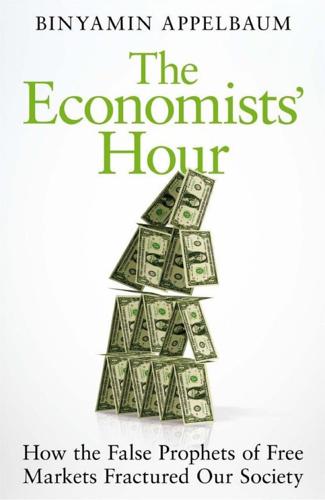
The Economists' Hour: How the False Prophets of Free Markets Fractured Our Society
by
Binyamin Appelbaum
Published 4 Sep 2019
Prices were quite different in regulated and unregulated states, and the paper’s conclusion — that this could be explained by factors other than regulation — rested on some odd assumptions. Price changes during the first three years after regulation began, for example, were not attributed to regulation. Two decades later, a Chicago graduate student asked Friedland for the data and found a basic math error.13 Stigler’s most important disciple, Sam Peltzman — whom Stigler feted as “the best purchase the Walgreen foundation has yet made” — later described Stigler’s work on regulation as propaganda.14 “He was very much the kind of a person who would say, ‘I’ll state this result as strongly as I possibly can, even if it’s not completely justified by the evidence,’ ” Peltzman said of Stigler.
…
“There is no reason,” said the 1982 Economic Report of the President, “to think that commands from the government can do a better job of increasing an individual’s economic welfare than the individual can by making choices himself.” Indeed, a growing literature suggested that regulation often had unanticipated adverse consequences. An early classic in this genre was a 1975 paper by Sam Peltzman, George Stigler’s protégé, arguing that seat belt laws killed pedestrians because drivers felt safer and therefore took larger risks. In February 1981, the White House summoned representatives of regulatory agencies to a meeting in the old office building that sits on the west flank of the White House, an odd Second Empire confection in a city of neoclassical temples.
…
.: Cambridge University Press, 2011), 148. 15. Freedman, In Search of the Two-Handed Economist, 386. 16. James Allen Smith, Brookings at 75 (Washington, D.C.: Brookings Institution, 2010), 89. 17. Martha Derthick and Paul J. Quirk, The Politics of Deregulation (Washington, D.C.: Brookings Institution, 1985), 34, 56. 18. Sam Peltzman, “Entry in Commercial Banking,” Journal of Law and Economics 8 (October 1965): 11–50. The paper is a condensed version of Peltzman’s dissertation. Peltzman later recounted Stigler told him he didn’t like the results, but couldn’t find any errors. See Freedman, In Search of the Two-Handed Economist, 380.

The Myth of Capitalism: Monopolies and the Death of Competition
by
Jonathan Tepper
Published 20 Nov 2018
When antitrust laws have been vigorously enforced, income inequality has been lower (Figure 10.7). Figure 10.7 Income Inequality in the United States versus Antitrust Enforcement SOURCE: Einer Elhauge, “Horizontal Shareholding,” Harvard Law Review 129, no. 5 (March 2016). The increase in inequality started after the antitrust revolution under President Ronald Reagan. Sam Peltzman, an economist at the University of Chicago, found that that concentration, which had been unchanged over the previous decades, began rising at the same time that merger policy changed. Concentration has increased steadily over the entire period after antitrust policy changed. He noted that the increase has been especially pronounced in consumer goods industries.13 The role of high industrial concentration on inequality is now becoming clear from dozens recent academic studies.
…
alias=/olivers-insights/august-2017/inequality-is-it-increasing. 10. http://www.epi.org/publication/ceo-pay-continues-to-rise/. 11. http://work.chron.com/ceo-compensation-vs-world-15509.html. 12. Gustavo Grullon, Yelena Larkin, and Roni Michaely, “Are U.S. Industries Becoming More Concentrated?” (August 31, 2017). Available at SSRN: https://ssrn.com/abstract=2612047. 13. Sam Peltzman, “Industrial Concentration under the Rule of Reason,” The Journal of Law and Economics 57, no. S3 (August 2014): S101–S120, https://doi.org/10.1086/675719. 14. Jonathan Baker and Steven Salop, “Antitrust, Competition Policy, and Inequality,” American University Washington School of Law Working Papers, February 25, 2015, http://digitalcommons.wcl.american.edu/fac_works_papers/41/. 15.
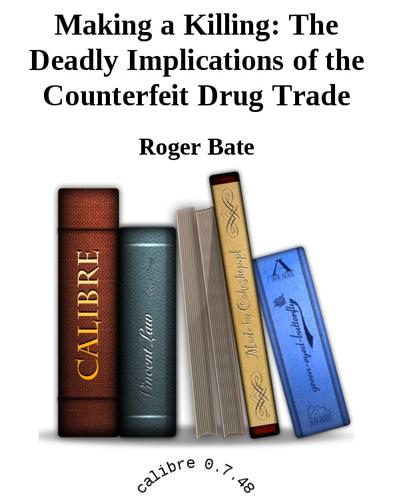
Making a Killing: The Deadly Implications of the Counterfeit Drug Trade
by
Roger Bate
Published 25 Jun 2008
Glenn Hubbard Dean and Russell L. Carson Professor of Finance and Economics Columbia Business School Samuel P. Huntington Albert J. Weatherhead III University Professor of Government Harvard University William M. Landes Clifton R. Musser Professor of Law and Economics University of Chicago Law School Sam Peltzman Ralph and Dorothy Keller Distinguished Service Professor of Economics Graduate School of Business University of Chicago George L. Priest John M. Olin Professor of Law and Economics Yale Law School Jeremy Rabkin Professor of Law George Mason University School of Law Murray L. Weidenbaum Mallinckrodt Distinguished University Professor Washington University Richard J.

Rise of the Robots: Technology and the Threat of a Jobless Future
by
Martin Ford
Published 4 May 2015
A term often used in place of “guaranteed income” is “citizen’s dividend,” which I think effectively captures the argument that everyone should have at least a minimal claim on a nation’s overall economic prosperity. The Peltzman Effect and Economic Risk Taking In 1975, the University of Chicago economist Sam Peltzman published a study showing that regulations designed to improve automobile safety had failed to result in a significant reduction in highway fatalities. The reason, he argued, was that drivers simply compensated for the perceived increase in safety by taking more risks.14 This “Peltzman effect” has since been demonstrated in a wide range of areas.
…
John Schmitt, Kris Warner, and Sarika Gupta, “The High Budgetary Cost of Incarceration,” Center for Economic and Policy Research, June 2010, http://www.cepr.net/documents/publications/incarceration-2010–06.pdf. 13. John G. Fernald and Charles I. Jones, “The Future of US Economic Growth,” American Economic Review: Papers & Proceedings 104, no. 5 (2014): 44–49, http://www.aeaweb.org/articles.php?doi=10.1257/aer.104.5.44. 14. Sam Peltzman, “The Effects of Automobile Safety Regulation,” Journal of Political Economy 83, no. 4 (August 1975), http://www.jstor.org/discover/10.2307/1830396?uid=3739560&uid=2&uid=4&uid=3739256&sid=21103816422091. 15. Hanna Rosin, “The Overprotected Kid,” The Atlantic, March 19, 2014, http://www.theatlantic.com/features/archive/2014/03/hey-parents-leave-those-kids-alone/358631/. 16.

More Guns, Less Crime: Understanding Crime and Gun-Control Laws
by
John R. Lott
Published 15 May 2010
The only real effect from making concealed handguns legal could arise from people being more willing to use them to defend themselves, though this might also imply that they would be more likely to make mistakes in using them. It is also possible that concealed-firearm laws both make individuals safer and increase crime rates at the same time. As Sam Peltzman has pointed out in the context of automobile safety regulations, increasing safety may lead drivers to offset these gains by taking more risks as they drive.23 Indeed, recent studies indicate that drivers in cars equipped with air bags drive more recklessly and get into accidents at sufficiently higher rates to offset the life-saving effect of air bags for the driver and actually increase the total risk of death for others.24 The same thing is possible with regard to crime.
…
The results of a recent Oklahoma poll showed that up to 6 percent of Oklahoma residents already carry concealed handguns either on their persons or in their cars; see Michael Smith, “Many Permits to Go to Lawbreakers,” Tulsa World, May 5, 1996, p. A15. The margin of error in the poll was 3.5 percent, which is substantial, given the small value with which this error is compared. 23. Sam Peltzman, “The Effects of Automobile Safety Regulation,” Journal of Political Economy 83 (Aug. 1975): 677–725. 24. Steven Peterson, George Hoffer, and Edward Millner, “Are Drivers of Air-BagEquipped Cars More Aggressive? A Test of the Offsetting-Behavior Hypothesis,” Journal of Law and Economics 38 (Oct. 1995): 251–64. 25.
…
In contrast, if we had instead inquired what difference it would make in crime rates if either all states or no states adopted right-to-carry concealed-handgun laws, the case of all states adopting concealed-handgun laws would have produced 2,000 fewer murders; 5,700 fewer rapes; 79,000 fewer aggravated assaults; and 14,900 fewer robberies. In contrast, property crimes would have risen by 336,410. 10. Ted R. Miller, Mark A. Cohen, and Brian Wiersema, Victim Costs and Consequences: A New Look (Washington, DC: National Institute of Justice, Feb. 1996). 11. See Sam Peltzman, “The Effects of Automobile Safety Regulation,” Journal of Political Economy 83 (Aug. 1975): 677–725. 12. To be more precise, a one-standard-deviation change in the probability of arrest accounts for 3 to 11 percent of a one-standard-deviation change in the various crime rates. 13. Translating this into statistical terms, a one-standard-deviation change in the percentage of the population that is black, male, and between 10 and 19 years of age explains 22 percent of the ups and downs in the crime rate.

Free to Choose: A Personal Statement
by
Milton Friedman
and
Rose D. Friedman
Published 2 Jan 1980
Now that's fine if what you are trying to do is minimize drug toxicity for the whole population, but if you happen to be one of those "not enough patients," and you have a disease that is of high severity or a disease that's very rare, then that's just tough luck for you. Granted all this, may these costs not be justified by the advantage of keeping dangerous drugs off the market, of preventing a series of thalidomide disasters? The most careful empirical study of this question that has been made, by Sam Peltzman, concludes that the evidence is unambiguous: that the harm done has greatly outweighed the good. He explains his conclusion partly by noting that "the penalties imposed by the marketplace on sellers of ineffective drugs before 1962 seems to have been sufficient to have left little room for improvement by a regulatory agency." 12 After all, the manufacturers of thalidomide ended up paying many tens of millions of dollars in damages—surely a strong incentive to avoid any similar episodes.
…
Gabriel Kolko, The Triumph of Conservatism (The Free Press of Glencoe, 1963), quotation from p. 99. 8. Richard Harris, The Real Voice (New York: Macmillan, 1964), p. 183. 9. William M. Wardell and Louis Lasagna, Regulation and Drug Development (Washington, D.C.: American Enterprise Institute for Public Policy Research, 1975), p. 8. 10. Sam Peltzman, Regulation of Pharmaceutical Innovation (Washington, D.C.: American Enterprise Institute for Public Policy Research, 1974), p. 9. 11. Estimates for 1950s and early 1960s from Wardell and Lasagna, Regulation and Drug Development, p. 46; for 1978, from Louis Lasagna, "The Uncertain Future of Drug Development," Drug Intelligence and Clinical Pharmacy, vol. 13 (April 1979), p. 193. 12.

Why We Drive: Toward a Philosophy of the Open Road
by
Matthew B. Crawford
Published 8 Jun 2020
One gets the sense that these are no longer separate elites; that they have merged into a super-elite bent on controlling the narrative of progress, even if at the cost of the public interest. WE HAVE A RISK BUDGET At a conceptual level, the difficulties of disentangling the causal factors in traffic accidents, and the toll of such accidents when they occur, remain much as they were in 1975 when Sam Peltzman published his influential study Regulation of Automobile Safety. The car operates in a larger risk ecology that is affected by traffic density, speed limits, rates of traffic-rule enforcement, the design and condition of roads, the quality of driver education, the availability and quality of hospital trauma care, the percentage of drivers who are young and inexperienced, rates of drunk driving, and so on.
…
As a consequence, the overall 40 percent reduction in the crash rates reported by NHTSA following the installation of Autosteer is an artifact of the Agency’s treatment of mileage information that is actually missing in the underlying dataset” (“NHTSA’s Implausible Safety Claim”). 7.Timothy B. Lee, “In 2017, the Feds Said Tesla Autopilot Cut Crashes 40%—That Was Bogus,” Ars Technica, February 13, 2019. See also Timothy B. Lee, “Sorry Elon Musk, There’s No Clear Evidence Autopilot Saves Lives,” Ars Technica, May 4, 2018. 8.Sam Peltzman, Regulation of Automobile Safety (Washington, DC: American Enterprise Institute for Public Policy Research, 1975), p. 4. 9.According to the Fatal Analysis Reporting System of the National Highway Traffic Safety Administration, in the year 2000 seat belts alone were estimated to have a 48 percent effectiveness in preventing fatalities (to people over twelve years old) in crashes that otherwise would have been fatal.
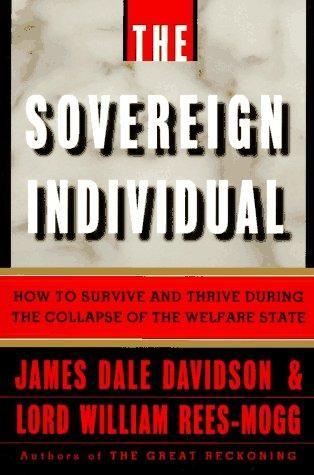
The Sovereign Individual: How to Survive and Thrive During the Collapse of the Welfare State
by
James Dale Davidson
and
William Rees-Mogg
Published 3 Feb 1997
According to a former interior minister, General Viktor Yerin, "The bulk were contract killings, because of conflicts in the sphere of commercial and financial activity." In most cases, authorities turned "a blind eye." Criminal organizations "through their control over coercion and corruption," as economists Gianluca Fiorentini and Sam Peltzman write in The Economics of Organized Crime, play a key role in the economy.'7 In theory, this influence can sometimes be beneficial because it constrains regulation and may encourage governments to improve their delivery of public goods. The presence of a powerful mafia "constrains the monopolistic role of government authorities." 8 Governments in territories with powerful organized crime groups can only with great difficulty entertain policies that the mafias oppose.
…
Krugman, "The Tax-Reform Obsession," New York Times Magazine, April 7, 1996, p.37. 34. Foldvary, op. cit., pp. 66f. Chapter II. Morality and Crime in the "Natural Economy" of the Information Age 1. Vito Tanzi, "Corruption: Arm's-length Relationships and Markets," in Gianluca Fiorentini and Sam Peltzman, eds., The Economics of Organized Crime (Cambridge: Cambridge University Press, 1995), pp.167, 170. 2. Hirshleifer, op. cit., p.176. 3. Ibid., p.169. 4. Michelle R. Garfinkel and Stergios Skaperdas, eds., The Political Economy of Conflict and Appropriation (Cambridge: Cambridge University Press, 1996), p.1. 5.
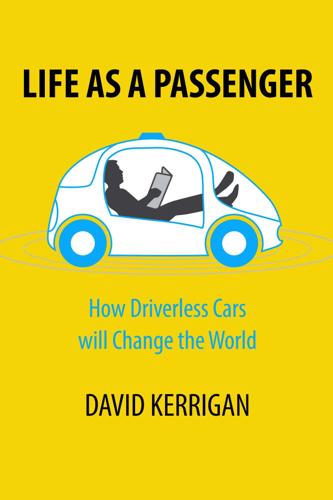
Life as a Passenger: How Driverless Cars Will Change the World
by
David Kerrigan
Published 18 Jun 2017
Although usually having a small impact in comparison to the fundamental benefits of safety interventions, risk compensation may result in a lower net benefit than expected from new initiatives. The reduction of predicted benefit from regulations that intend to increase safety is sometimes referred to as the Peltzman effect in recognition of Sam Peltzman, a professor of economics at the University of Chicago Booth School of Business, who published "The Effects of Automobile Safety Regulation" in the Journal of Political Economy in 1975.[159] Cars Don’t Crash It’s important to point out that currently in almost all cases of car crashes, the car itself is not at fault - a tiny percentage of car crashes are the result of mechanical failure, yet these are more tightly regulated and enforced than the humans that cause over 90% (see table below).
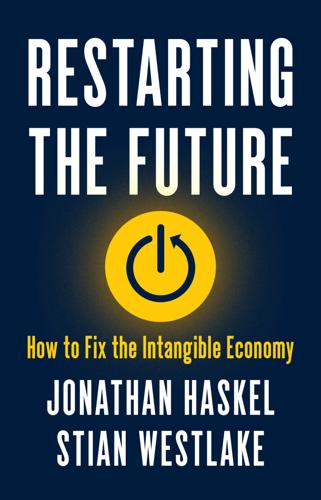
Restarting the Future: How to Fix the Intangible Economy
by
Jonathan Haskel
and
Stian Westlake
Published 4 Apr 2022
As we saw in figure 2.4, Carol Corrado and colleagues find evidence consistent with this suggestion.10 Controlling for a large number of other factors, industries that are more intangibles intensive have a growing productivity dispersion, which suggests that intangibles are the main driver of productivity dispersion, an argument consistent with that made by Sam Peltzman.11 The implication of all these findings is that intangibles help make sense of the crisis of interfirm competition in three ways. First, including intangibles in some measures of market power (such as markups) reduces or eliminates the apparent increases in market power we would otherwise see in the data.
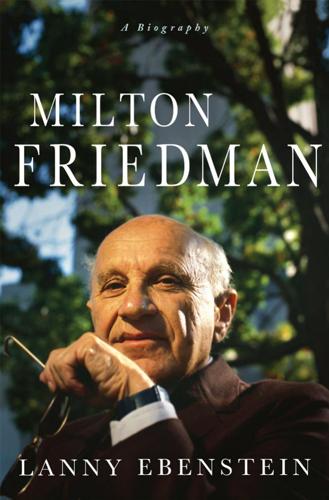
Milton Friedman: A Biography
by
Lanny Ebenstein
Published 23 Jan 2007
I also had the opportunity to meet David’s wife, Elizabeth, and to have a telephone conversation with Milton’s nephew Alan Porter. Friedman’s longtime secretary, Gloria Valentine, was encouraging and helpful. Others who gave interviews include Gary Becker, Anna Jacobson Schwartz, Lester Telser, Larry Sjaastad, Thomas Sowell, Sam Peltzman, Stephen Stigler, Larry Wimmer, John Turner, and the late D. Gale Johnson. Paul Samuelson sent a useful letter with reactions to some questions. For my biography of Hayek, I had the opportunity to interview W. Allen Wallis, Edwin Meese, and Ronald Coase, among others, and to talk briefly on the phone with Aaron Director.
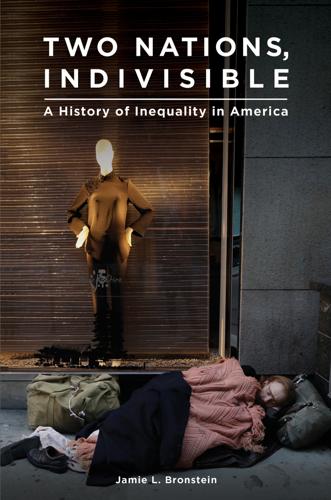
Two Nations, Indivisible: A History of Inequality in America: A History of Inequality in America
by
Jamie Bronstein
Published 29 Oct 2016
Annals of the American Academy of Political and Social Science vol. 663 (2016) 8–29; Joel Mokyr, Chris Vickers, and Nicholas L. Ziebarth, “The History of Technological Anxiety and the Future of Economic Growth: Is This Time Different?” Journal of Economic Perspectives vol. 29 np. 3 (Summer 2015): 31–50. 73. Sam Peltzman, “Mortality Inequality,” Journal of Economic Perspectives vol. 23 no. 4 (Fall 2009): 175–190. 74. David K. Jones, Katharine W. V. Bradley, and Jonathan Oberlander, “Pascal’s Wager: Health Insurance Exchanges, Obamacare, and the Republican Dilemma,” Journal of Health Politics, Policy and Law vol. 39, no. 1 (2014): 97–137. 75.
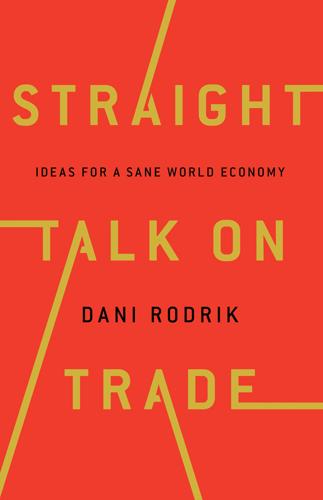
Straight Talk on Trade: Ideas for a Sane World Economy
by
Dani Rodrik
Published 8 Oct 2017
Isaiah Berlin, The Hedgehog and the Fox: An Essay on Tolstoy’s View of History, Weidenfeld & Nicolson, London, 1953. 21. Daniel Drezner, The Ideas Industry, Oxford University Press, New York, 2017. CHAPTER 7: Economists, Politics, and Ideas 1. George J. Stigler, “The Theory of Economic Regulation,” Bell Journal of Economics and Management Science, vol. 2(1), Spring 1971: 3–21; Sam Peltzman, “Toward a More General Theory of Regulation,” Journal of Law and Economics, vol. 19(2), 1976: 211–240; Jean-Jacques Laffont and Jean Tirole “The Politics of Government Decision Making: A Theory of Regulatory Capture,” Quarterly Journal of Economics, vol. 106, 1991: 1089–1127. 2. Anne O. Krueger, “The Political Economy of the Rent-Seeking Society,” American Economic Review, vol. 64(3), June 1974: 291–303; Gene Grossman and Elhanan Helpman, “Protection for Sale,” American Economic Review, vol. 84(4), 1994: 833; Dani Rodrik, “The Political Economy of Trade Policy,” in Handbook of International Economics, G.
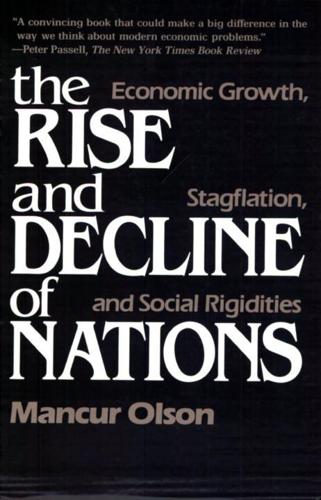
The Rise and Decline of Nations: Economic Growth, Stagflation, and Social Rigidities
by
Mancur Olson
Bochum), Harvey Leibenstein (Harvard U.), Edward J. Lincoln (Johns Hopkins U.), Edmond Malinvaud (Inst. National de la Statistique, Paris), R. C. O. Matthews (Clare, Cambridge), Christian Morrisson (Ecole Normale Superieure), Daniel H. Newlon (National Science Foundation), Yusuke Onitsuka (Osaka U.), Sam Peltzman (U. of Chicago), Richard Portes (Birkbeck, London), Frederic L. Pryor (Swarthmore College), Walter Salant (Brookings Institution), Hans Soderstrom (U. of Stockholm), Ingemar Stahl (U. of Lund), Carl Christian von Weizsacker (U. of Bonn), Hans Willgerodt (U. of Cologne), Wolfgang Zapf (U. of Mannheim).

Markets, State, and People: Economics for Public Policy
by
Diane Coyle
Published 14 Jan 2020
Public Choice, Collective Action, and New Public Management James Buchanan (1986), Nobel Prize lecture, http://www.nobelprize.org/nobel_prizes/economic-sciences/laureates/1986/buchanan-lecture.html. Julian Le Grand (1997), “Knights, knaves or pawns,” Journal of Social Policy 26, no. 2: 149–169, eprints.lse.ac.uk/3120/1/Knights,_Knaves_or_Pawns.pdf. D. Mueller (1976), “Public Choice: A Survey,” Journal of Economic Literature 14, no. 2: 395–433. Sam Peltzman (1975), “The Effects of Automobile Safety Regulation,” Journal of Political Economy 83, no. 4: 677–725. Leon Robertson (1977), “A Critical Analysis of Peltzman’s ‘The Effects of Automobile Safety Regulation,’” Journal of Economic Issues 11, no. 3: 587–600. Regulatory Capture and Public Sector Capability Ernesto Dal Bo (2006), “Regulatory Capture: A Review,” Oxford Review of Economic Policy 22, no. 2: 203–225.

Green Philosophy: How to Think Seriously About the Planet
by
Roger Scruton
Published 30 Apr 2014
See especially ‘An Idea We Cannot Do Without’, in Soran Reader, ed., The Philosophy of Need, Cambridge, 2004. 141 See David Wiggins, ‘Solidarity and the Root of the Ethical’, Tijdschrift voor filosofie, 2009. 142 Hans Jonas, The Imperative of Responsibility, 1984, English translation, Chicago, 1985. 143 Ulrich Beck, Risk Society: Towards a New Modernity, London, 1992. 144 Aaron Wildavsky, op. cit. The contrast between resilience and interception was made central to ecology by C. S. Holling, ‘Resilience and Stability of Ecological Systems’, Annual Review of Ecology and Systematics, 4, 1973, pp. 1–23. 145 Sam Peltzman, ‘An Evaluation of Consumer Protection Legislation: The 1962 Drug Amendments’, Journal of Political Economy, 1973; ‘Toward a More General Theory of Regulation’, Journal of Law and Economics, 1976. A pertinent, and damning, examination of the effect of regulation on drug trials in the UK is given by Denis Mitchison, ‘The Regulation of Clinical Trials’, openDemocracy www.opendemocracy.net/author/denismitchison, 30 November 2009. 146 See, for example, the study of the EPA’s continuing regulatory regime to control air quality: Joel M.
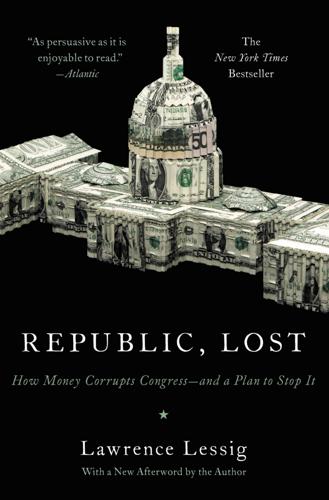
Republic, Lost: How Money Corrupts Congress--And a Plan to Stop It
by
Lawrence Lessig
Published 4 Oct 2011
The foundational work is George Stigler’s, “The Theory of Economic Regulation,” Bell Journal of Economics and Management Science 2 (1971): 3, and Richard Posner’s, “Taxation by Regulation,” Bell Journal of Economics and Management Science 2 (1971): 22. See also Richard A. Posner, “Theories of Economic Regulation,” Bell Journal of Economics and Management Science 5 (1974): 335; Sam Peltzman, “Toward a More General Theory of Regulation,” Journal of Law and Economics 19 (1976): 211; Burton Abrams and R. Settle, “The Economic Theory of Regulation and Public Financing of Presidential Elections,” Journalof Political Economy 86 (1978): 245; James Q. Wilson, The Politics of Regulation (1980).
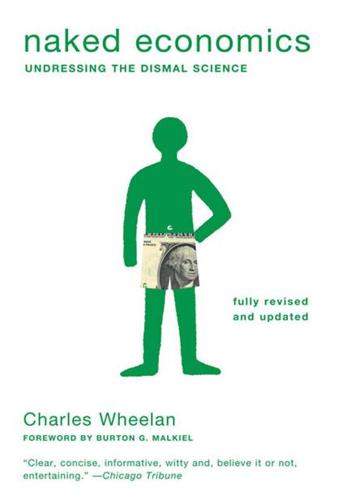
Naked Economics: Undressing the Dismal Science (Fully Revised and Updated)
by
Charles Wheelan
Published 18 Apr 2010
I’ve made the case that economics is often poorly taught. That is true. But it’s also true that the discipline can come alive in the hands of the right person, and I was fortunate to work and study with many of them: Gary Becker, Bob Willis, Ken Rogoff, Robert Willig, Christina Paxson, Duncan Snidal, Alan Krueger, Paul Portney, Sam Peltzman, Don Coursey, Paul Volcker. My hope is that this book will help to transmit their knowledge and enthusiasm to many new readers and students. naked economics CHAPTER 1 The Power of Markets: Who feeds Paris? In 1989, as the Berlin Wall was toppling, Douglas Ivester, head of Coca-Cola Europe (and later CEO), made a snap decision.

Adaptive Markets: Financial Evolution at the Speed of Thought
by
Andrew W. Lo
Published 3 Apr 2017
In the 1960s, automobile safety became an important social issue in the United States. We passed laws mandating that cars have seatbelts, padded dashboards, safer steering columns, and safer windshields to cut down on the number of deaths caused by fatal head and chest injuries. But when the University of Chicago economist Sam Peltzman looked at the data in 1975, he came to the controversial conclusion that any increases in safety were offset by a worsening of driver behavior.15 The increase in pedestrian deaths offset the decrease in driver deaths that followed the new safety features. A number of researchers disagreed with Peltzman’s conclusions, arguing that his study didn’t take into account a number of confounding factors like the skills of the drivers, the mechanical conditions of the cars, whether the accidents occurred on highways or local streets, whether the drivers were commuting or on vacation, and so on.
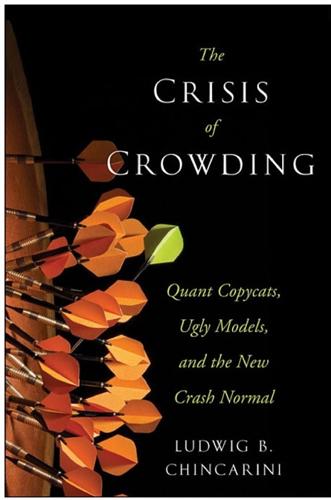
The Crisis of Crowding: Quant Copycats, Ugly Models, and the New Crash Normal
by
Ludwig B. Chincarini
Published 29 Jul 2012
The Basel rules are discussed in detail in Chapter 13. 19. This concept of the danger of creating new policy without considering individual reactions is called the Lucas Critique, commonly credited to Robert Lucas of the University of Chicago. Some people call the human behavior Merton discussed the Peltzman Effect, named after economist Sam Peltzman, who first showed that regulatory changes do not always lead to the intended consequences. The No Child Left Behind Act is another example. This seemingly good rule had led to undesirable changes in behavior. On July 13, 2011, the Atlanta school system found widespread cheating among teachers and administrators, who wanted an easier way to keep up with educational standards (Timothy 2011). 20.